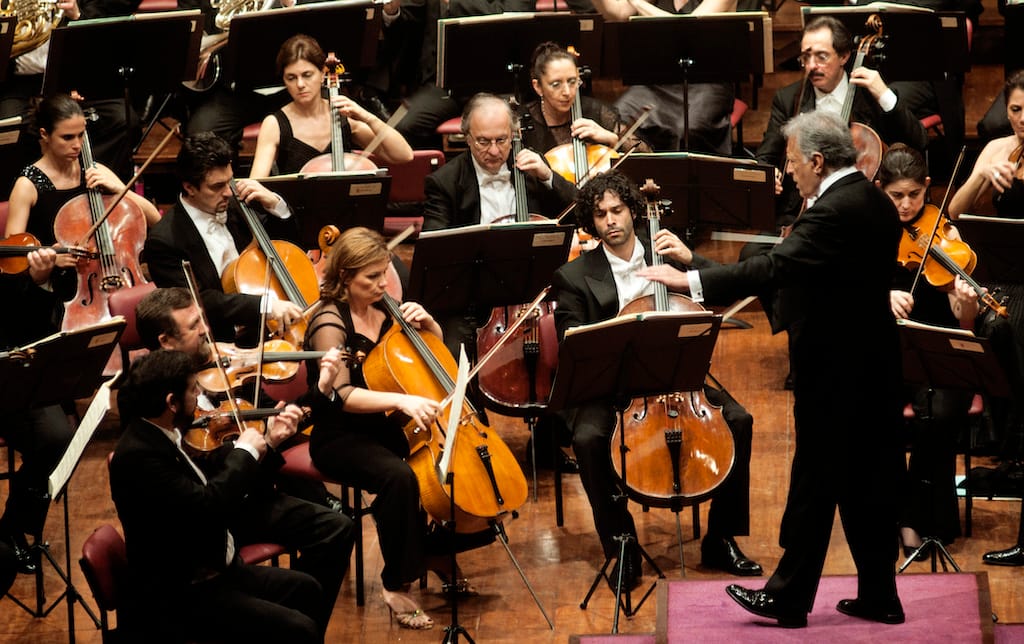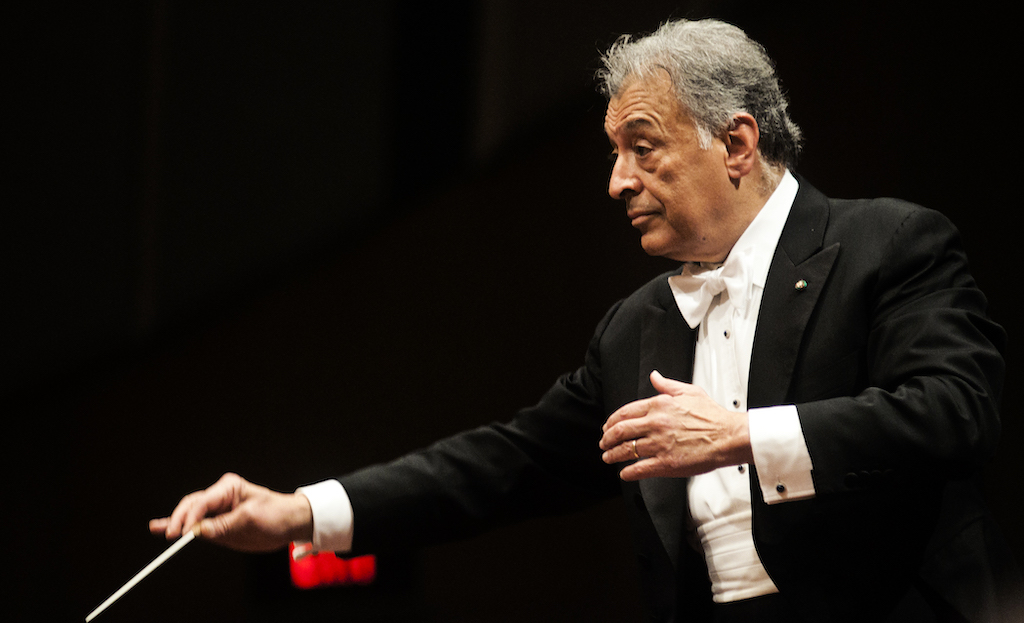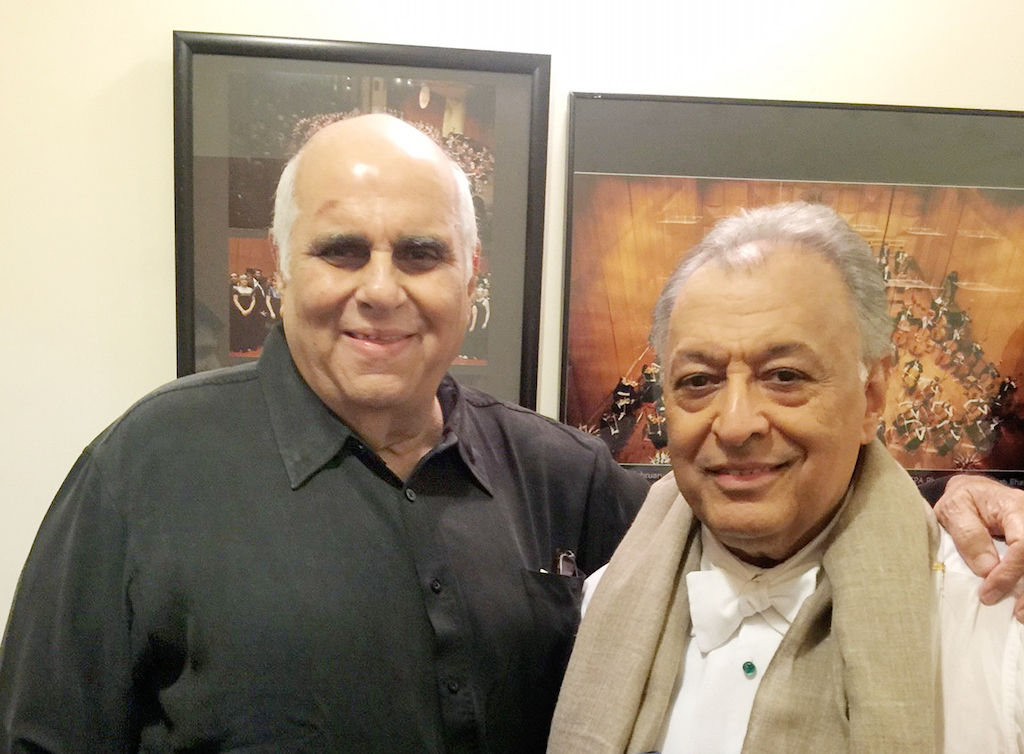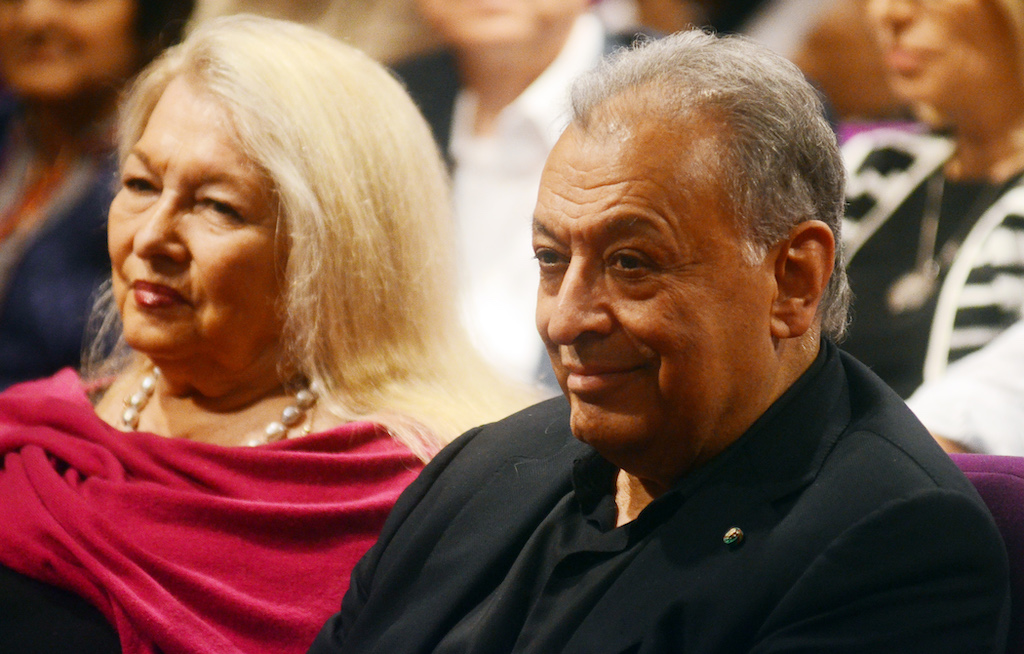The Imprimatur

Zane Dalal shares personal reflections on the repertoire and his 46-year association with Zubin Mehta, ahead of the Maestro’s eagerly awaited concerts with the Symphony Orchestra of India on 19th and 21st August.
It is my great pleasure to write once more for the readership of ON Stage, this time on a subject matter that gives the NCPA and the SOI tremendous pride, and for a plethora of reasons has remained elusive until now. “Aapro Zubin” will lead the SOI in two concerts this August, on the 19th and 21st, in Mozart’s Overture to The Marriage of Figaro, Schubert’s Symphony No. 8 in B minor “Unfinished” and Mahler’s Symphony No. 1 “Titan”. The concerts are being presented by the NCPA and Mehli Mehta Music Foundation. Our readers who are avid concertgoers will hopefully find my anecdotal approach to these pieces interesting and informative, whilst those who have yet to make concert-going a passion, will find part of their new-found delight in this genre, by viewing it through a different lens.

It is a particularly high honour for me to write on this visit to us by Maestro Mehta, because in my long association with attending his rehearsals and concerts, I have never had cause nor opportunity to write on my experience of them. They developed over time into a warm relationship where he went out of his way to provide extraordinary moments in which I was brought into close contact with the music-making.
I recall in Florence in 1989, performances of “Eroica”, Rienzi overture and Verdi’s Requiem at the Maggio Musicale. He asked how well I knew the Requiem. Before I knew it, I was not just attending rehearsal but singing in the chorus. On the same trip, during one of his days off, the theatre was given over to a great performance of Der Rosenkavalier, with Jiří Kout at the helm and Anna Tomowa-Sintow as the Marschallin, who was making waves with her debut at the time and was Herbert von Karajan’s favoured soprano for the 9th Symphony, in his third complete Beethoven cycle. I was duly introduced to all these cast members backstage by Zubin as Maestro Dalal. It was a typical moment of generosity of which there have been so many. It was also, incidentally, the first time I met Mehroo Jeejeebhoy, who was also in Florence at the time. We had both been invited to lunch with the maestro. Come to think of it, it was also the first time I enjoyed tiramisu the way it should be, a yardstick that I have kept all these years.
However, these moments of generosity were primarily in Los Angeles, where we both make our home, even to this day and they go back to 1977, before I knew I was going to be a musician and he was in his 16th year as Music Director of the Los Angeles Philharmonic just before his tenure at the New York Philharmonic. I remember a particularly fine Beethoven 5th at the Hollywood Bowl from that period, and I didn’t know then that attending rehearsals, score in hand, watching, learning and eventually, I’m proud to say, discussing various nuances and details of orchestral colour would be made so easy and approachable. There was another moment where I felt so preferentially treated. It was in a run of at least 9 or 11 Tristans at the LA Opera, Florence Quivar as Brangäne, the famous David Hockney trees and stage design, and particularly fine playing from the LA Phil in the pit. I arrived without having been able to acquire a ticket to these sold-out affairs and went immediately to meet Maestro. I remember how busy he was before, and in the breaks, dealing with all manner of extra-musical working cog details, and for that I suppose I was particularly lucky. He summoned a house manager at the LA Opera and spoke kindly but firmly, “Would you get Mr. Dalal a ticket, please.” I was overjoyed, but that was not all. Just as the manager reached the door of the green room, Zubin added briskly, “in a seat where he can see me clearly…” The first ask was faintly possible. The second was absolutely impossible because we were about five minutes from downbeat. There I sat four rows back, dead centre of the orchestra stalls, so close that I could see the whites of musicians’ eyes and the subtle interplay between cast members and conductor. It was a real live masterclass in operatic stagecraft.

I am immensely grateful for the connection we have forged on a musical level, and the generosity of spirit he has shown and continues to show when we have occasion to meet, quite apart from the affection that our two families shared, hinged by the enduring friendship between my mother DhunMai and his mother Tehmi.
We are in for a treat this month at the NCPA. The programme may seem to include the usual fare of great masterworks, as expected, but Maestro Mehta’s treatment of these composers, and in particular, these pieces is uniquely shaped by his singular experiences, not only first-rate but now, as we are privileged to witness the elder statesman at work, almost certainly legendary.
There are several facets to Mehta’s brand of excellence. Some of them are well known and documented. Others are lesser known or recognised only by a handful of cognoscenti but equally as important. Whether it is his stick technique, so incredibly clear that if there were any question about cohesion, the players were just not attentive enough, or whether it is his ability to build an overarching structure no matter how lengthy or complicated a work. Whether it is his skill with a vast repertoire that comfortably spans Bach to Berio, or whether it is his ability to present the essence and style of each composer so that the ribald sounds of Gershwin or Copland are essentially Americana as much as the Mozart or Schubert are ‘echt authentisch Wiener’. There are so many more areas of expertise that make up the whole, one could devote an entire book to them. The one that perhaps dominates, to my mind, is his skill as an accompanist, not because he has single-handedly helped launch the careers of literally hundreds of mainstream virtuoso artistes—from Vengerov to Midori, from Lang Lang to Buniatishvili— but that it speaks to his extraordinary ability to allow a musician to breathe and to play comfortably in their own skin and to listen and be flexible whilst at the same time creating that overall arch for the piece. These qualities are necessary and prerequisite if one wishes to conduct opera. After all, an opera is but a concerto for cast members and chorus, but with the added complication that they should seem to be involved in drama and not necessarily set up to watch the beat. To my mind, this ability to nurture a melody or bring out the hauptstimme is of paramount importance in all the repertoire, and if one approaches orchestral repertoire as if it is written for soloists, one can discover another territory altogether.
When the composer is a master of the operatic form, what he writes in his chamber music and his symphonies will reflect operatic tendencies of timing, breathing and melody. This is completely true of Mozart, whose symphonies and quartets cannot be understood without knowing his operas. So it would stand to reason that the most convincing performances of Mozart are almost always achieved by those who are not just familiar with opera but masters of operatic conducting. Now as I mention the names you will automatically agree that Mehta along with Bruno Walter, James Levine, Carlos Kleiber, Carlo Maria Giulini and perhaps two or three more, have a special key to secrets that remain elusive to others. When listening to Mozart’s short, fiery yet refined overture to The Marriage of Figaro, think about not just what you are hearing but the whole wealth of experience and craft that is allowing that sound to occur. It will bring you closer to an understanding of not just what a conductor does, but, in particular, why working Mozart with Maestro Mehta is such a gift to our musicians. But don’t take just my word for it. Recently available on CD is a recording made in the 1970s with the Israel Philharmonic. Here’s an excerpt from an online review by David Rowe.
Is there anything that Zubin Mehta doesn’t do well? It is astonishing these Mozart symphony recordings from the late 70s are just now seeing the light of day on CD. For they are among the most enjoyable I’ve heard. It is a pity Mehta and Decca did not record a “complete” set of the later symphonies (say from the mid #20s through #41) in Israel. What we do get are #34, 39 & 40. Unbounded joy and freshness pervade every bar – aided by alert, crisp playing from all departments of the Israel Philharmonic, especially the excellent strings sections. Mehta was always a stickler for crisply articulated bowing from his strings, and this is evident here and pays enormous dividends. Why do so many conductors today allow their strings to play with inarticulate, mushy, on-the-string bowing? It’s a mystery, especially after hearing how glorious it is when played correctly, as on this set.
Franz Schubert is another such Viennese composer who, perhaps even more than Mozart, is aligned with the Vienna that Mehta knows and experienced firsthand when at the Hochschule under the tutelage of Hans Swarowsky, with his close colleagues Daniel Barenboim and the late Claudio Abbado. Mehta is aligned to this understanding of Vienna, the way the German is spoken, the way the people think and what is prioritised, and which stones are deliberately left unturned. Yes, Vienna represents a paradox, the apex of culture and art, the presence of tremendous diversity as a former imperial capital, but also a city of traditions, some of which are quaint, some of which are what Mahler referred to as “Schlamperei” (which roughly translates to “sloppy”) and yet others that are best not mentioned because they draw you to a dark and questionable current that is ever present in the shadows, for those who are not ‘part of the fold’. Mehta finds himself at home in Vienna but is no stranger to the sometimes xenophobic, sometimes inexplicable counter thrust against a backdrop of biergarten, schnitzel and Sachertorte. Having proscribed and completely banned even the mention of nobility, imperial titles or hereditary peerage, one suspects that the outward show of the correct law belies the reality of its presence. Whereas in Germany, though titles have no political or public standing, they are not banned, and the country keeps its traditional noble houses intact precisely because they continue off the radar without hindrance or involvement.

There are many things in the music of Schubert that are noteworthy and some staggeringly so. A consummate melodist, Schubert’s beautiful unravelling lines of spun gold show not only an understanding of the practical nature of playing and breathing, but also a deep understanding of harmony, which is perceptibly flexible through almost every note. Like Brahms, Schubert has the extraordinary ability to make the horizontal line of the melody integral to the vertical line of the harmony, so that in examining one, you are automatically examining the other as well. This sort of complication is where Mehta thrives. The Schubert, evocative and yet pragmatically centred—steeped in tradition yet at the same time other-worldly and far beyond his time—is part and parcel of the unfinished Symphony No. 8. Written in between 1822 and 1823 and presented in 1824 to thank the University at Graz for his doctorate, the piece was never delivered by Hüttenbrenner who sat on the Graz committee, and not performed until 1865 when, guilty of having sat on a treasure, he revealed the score to conductor Johan von Hurbeck. The audience went wild on hearing this extraordinary piece. Written whilst Beethoven was still alive and premiered whilst audiences were about to receive Wagner’s Das Rheingold, the “Unfinished” demonstrates the scope of language it contains and the gulf of time and tradition it spans. If one examines just the opening bars, the traditions of Schubert’s day are combined with a delirium and soundscape so far advanced that they easily could have been introduced by Wagner. Some suspect that delirium to be the ravages of syphilis from which Schubert eventually died in 1828.
Mahler’s Symphony No. 1, “Titan”, is another piece far-ranging in its language and beyond its day. Written in that extraordinary 50-year span between 1875 and 1925 where humans journeyed from candlelight to jet aircraft, one might expect far-reaching and equally remarkable achievements in art and culture. Charles Dickens is connected with Thomas Mann and Franz Kafka. Karl Marx and Friedrich Engels with Carl Jung. More amazingly for Mahler’s 1st, the 1880s delivered Brahms’s 3rd and 4th symphonies, Verdi’s Otello, Massenet’s Manon, Bruckner’s 8th symphony, Borodin’s Prince Igor, Strauss’s Don Juan and in the same year (1888) Tchaikovsky’s 5th symphony. Meanwhile, the St. Gotthard Pass was built, the Panama Canal was built, and Marconi sent his first radio messages, as Pasteur immunised for rabies. Even with that backdrop, the language of Mahler 1 seems far beyond its time.
Again, Mehta excels in all of Mahler, but most especially symphonies 1 through 5, those referencing Des Knaben Wunderhorn. There are so many marvellous inconsistencies in the telling of this grand story. Mahler the Jew, finding his way in an antiSemitic environment, the sounds of the synagogue mixed with the sounds of the Catholic church and those in turn mixed with the military marches of the parade ground in Iglau, itself a German outpost surrounded by Czech and non-Germanic peoples, are the bucket from which he draws. This hotchpotch of inspiration proves to be a powerful source for an immensely powerful piece. Mehta’s understanding of Mahler goes way beyond, and there are subtleties in the score which need attention. Mahler, a conductor himself, constantly wrote instructions for not only the players but also the conductors. Some of it is nitpicking to improve the standards of playing, and some of it is a composer’s hieroglyph from within the piece trying to transmit his sensibilities to future generations. Deciphering this coded language is a rarified art—one in which Mehta excels.
I have had the good fortune to listen to and witness performances and rehearsals of Mehta’s Mahler at very close proximity and over at least four decades. From his fine recording of the 2nd Symphony with the Vienna Philharmonic with Ileana Cotrubas and Christa Ludwig—still an adored benchmark by so many Mahler enthusiasts—to his most recent performance with the Los Angeles Philharmonic just before COVID shut us down, it has been a privilege to enjoy and the education of an era. That he brings this privilege and this education to our musicians at the SOI and our audiences at the NCPA is not just a momentous and historic occasion— it is the ultimate imprimatur for Khushroo, Marat and myself. An imprimatur and a nihil obstat for all those of us involved in the long and arduous work of orchestra-building.
The SOI will embark on its second tour of the U.K. in November/December of this year. Zane Dalal, Associate Music Director of SOI and frequent contributor to ON Stage, will conduct on 10th September at the NCPA, in repertoire that will be presented on tour, featuring Rossini’s Semiramide Overture, Khachaturian’s Violin Concerto with Marat Bisengaliev as soloist and Tchaikovsky’s Symphony No. 6 “Pathétique”.
This piece was originally published by the National Centre for the Performing Arts, Mumbai, in the August 2023 issue of ON Stage – their monthly arts magazine.





